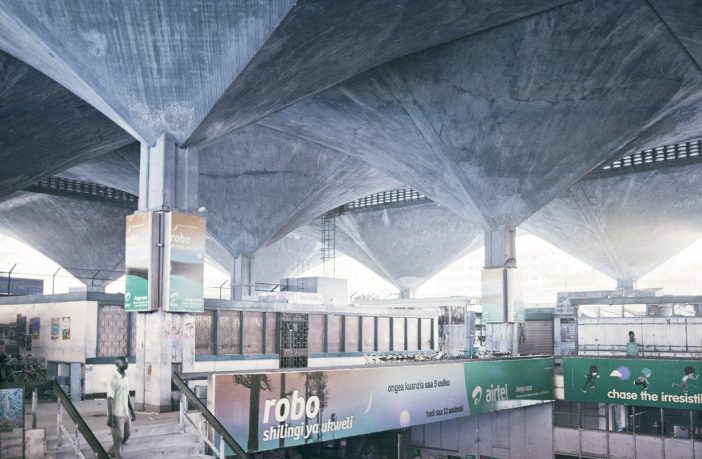- The legacy of the Modernist movement is a complicated one.
- Spanning a diverse assortment of fiercely debated sub-categories and styles, the Modernist style has established its presence in virtually every continent.
- Although the movement’s origins may be rooted in Europe and the U.S, outside of the Eurocentric canon architects have redefined and re-established what the definition of a “Modernist” building is. In Sri Lanka, for example, architect Geoffrey Bawa’s sensitive, nature-inspired architectural responses gave rise to the “Tropical Modernism” label.
- Over in the African continent, it is in the East-African country of Tanzania that some highly unique examples of Modernist architecture are found – headed by architects Anthony Almeida and Beda Amuli.
Of Goan origin, Anthony Almeida was born in and raised in Tanzania’s commercial hub of Dar es Salaam. Going on to study architecture at the prestigious Sir J.J School of Architecture in Mumbai, Modernist figures such as Le Corbusier, Frank Lloyd Wright, and Alvar Aalto figured heavily in his university education, providing a framework within which he built his own architectural principles. Concluding his architectural education in 1948, Almeida headed back to Dar es Salaam, where in a few years, he was able to start his own architecture firm.
Almeida’s “breakthrough” came in 1955 when Almeida got an offer from the Goan community to design a co-educational primary school for 500 students. Approval for the scheme had to come from the British colonial government – meaning that Almeida had to show his proposed scheme to the Director of Education of the colonial administration. The British planning bureaucracy, however, was quite conservative, and Almeida had to defend his ‘very Modern’ and ‘radical’ scheme for the school. Known as St. Xavier’s Primary School, it exemplified Almeida’s climate-responsiveness and modern functionalism, featuring elevated classrooms held up by structural columns and a muted palette of materials. The distinctive shape of the floor plan, with washrooms placed away from the main building – reminded the Director overseeing his design of ‘an airplane’.

t
Post-independence in Tanzania saw the design of Anthony Almeida’s own residence in 1963 – an unassuming, muted, structure. Situated near the beach, it is almost unnoticeable from the main road which runs directly outside it. It consists of three narrow single-story volumes which are staggered – and their positioning makes it so as the wind can pass through all the rooms. The free ground plan of the residence allows the building to be able to have three zones – covering the activities of leisure, dining, and sleeping – without hard barriers between them.





The residence also utilizes a horizontal canopy and vertical apron for solar shading – with the gap in-between allowing air to circulate. The bedrooms are placed on an elevated level towards the back of the house, and a wooden bridge (numbered 7 on the floor plan) connects two covered volumes of the house, almost resembling a stream.
In conjunction with the increasing emergence of Almeida’s projects was the emergence of another Tanzanian architect – Beda Amuli. The first black African to open an architecture practice in all of East and Central Africa, Amuli studied at the Israel Institute of Technology, starting his own practice in 1970. Arguably the most iconic of his designs was realized in 1973 – Kariakoo Market. Designed in a Brutalist style, Amuli’s concept for the design was an African market under the covering shade of trees. Amuli’s challenge was to translate the shape of a tree — with its stem and branches, into a sturdy, concrete structure. The result was a highly distinct concrete structure, reminiscent of the work of Mexican architect Felix Candela.



The surface area of approximately 540 square meters is structured with free-standing concrete pillars, topped with mushroom-shaped crowns which expand to sunshades 15 by 15 meters wide — the ‘trees’ of the African market. Several levels are made use of in the structure – goods deliveries taking place on the cooler basement level, while the area for sales is located two floors above ground. The central staircase creates a chimney effect, which transports hot air into the roof, from where it can escape through the offset between the shading ‘tree crowns’. The environmental considerations of the design are underscored by the multi-purpose use of the sunshades, which collect rainwater used in running the market. The sculptural building is a landmark of its own today and serves as a unique backdrop to Dar es Salaam’s busiest market.
Almeida and Amuli passed away in 2019 and 2016 respectively, but their Modernist legacy lives on. Their body of work is far greater than what was outlined above, each of them realizing hundreds of projects in their lifetimes. In a city, and country, with an eclectic mixture of architectural styles, Almeida and Amuli’s architecture provides a useful starting point to understanding the enduring legacy of the Modernist movement in the African continent.
Author: Matthew Maganga
This article was first published in Arch Daily and is republished with permission.













